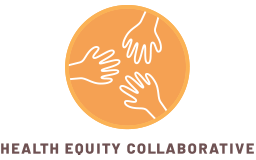05 Aug Navigating the New Era of Vaccine Guidance
This August, as we mark National Immunization Awareness Month, we find ourselves in a rapidly changing vaccine landscape. A new wave of guidance is unfolding, with updated booster rules and new formulations designed to combat the latest variants. This shift reflects ongoing scientific progress, but it also presents a new challenge: how to effectively communicate these changes to the public.
For many, keeping up with the evolving recommendations can be confusing. Policies that change frequently can lead to a sense of uncertainty and make it difficult for individuals to know when and if they should get their next shot.
The Fast-Moving Landscape of COVID-19 Vaccines in 2025
A major change is the new approach to COVID-19 vaccination, which is now mirroring the annual flu shot model. The FDA has approved new, monovalent COVID-19 vaccines for fall 2025 that target the JN.1 lineage, including the LP.8.1 strain. This is a change from previous years, as the goal is to more closely match currently circulating SARS-CoV-2 viruses.
However, a key policy change has introduced new restrictions on who is routinely recommended to receive these annual shots. The Trump administration has stated that yearly COVID-19 boosters will no longer be routinely approved for healthy younger adults and children. Instead, the focus will be on adults over 65 and individuals with medical conditions that put them at severe risk of complications from the virus. While other healthy individuals may still be able to get the vaccine under “shared clinical decision-making” with their doctor, this shift in guidance is creating confusion and potential barriers to access, as some experts warn it may affect insurance coverage for those not in the high-risk groups.
Other Immunization Updates
While the new COVID-19 guidance is the most talked-about change, other updates are also happening this fall:
- Flu Vaccines: The American Academy of Pediatrics has released its 2025-2026 flu vaccine recommendations, which are largely consistent with previous years, urging everyone age 6 months and older to get vaccinated. The H3N2 component has been updated, and all flu vaccines for the season will be trivalent. There’s also a new policy to remove thimerosal from all flu vaccines in the U.S., though manufacturers have confirmed this will not affect the supply.
- Childhood Immunization Rates: Public health officials are expressing concern over a continued decline in childhood vaccination rates. The U.S. has seen its worst year for measles spread in over three decades, and exemptions for school-based vaccine requirements have reached an all-time high.
- Other Vaccines: The CDC has released its 2025 immunization schedules, which include updates for meningococcal B and Haemophilus influenzae type b (Hib) vaccines. There are also new clarifications regarding RSV prevention for infants and older adults.
Effective Public Health Strategies in Action
Amid these changes, we know that success is possible with the right approach. When health initiatives are designed with a focus on convenience and communication, they can overcome significant barriers and build public trust. Real-world examples show that getting this right requires innovation and a commitment to meeting people where they are.
Consider the creative approaches deployed during the COVID-19 pandemic. In cities like Lubbock, Texas, the local health department partnered with the public transportation provider to transform city buses into mobile vaccination clinics. These “vaccine buses” traveled to neighborhoods with low vaccination rates, offering shots on a walk-in basis and turning a logistical challenge into a seamless solution.
Similarly, in Boston, mobile health units from a major academic medical center were deployed to low-income neighborhoods, providing not just vaccines, but also health screenings and services. This approach was highly successful, with the mobile clinics reaching communities that had been disproportionately affected by the pandemic and achieving higher vaccination rates among specific populations than the state average.
These initiatives prove that a proactive, community-centered approach can be more effective than a one-size-fits-all model. By leveraging trusted local partners, adapting to real-world challenges, and making vaccination as convenient as possible, public health leaders can build confidence and ensure that new health guidance translates into tangible protection for everyone.
What’s Next: A Warning Shot and a Wake-Up Call
Last month, the Health Equity Collaborative (HEC) released a joint letter alongside 16 partner organizations in response to a deeply troubling decision: Secretary of Health and Human Services Robert F. Kennedy Jr.’s removal of the CDC’s Advisory Committee on Immunization Practices (ACIP), and subsequent replacement of the committee with known vaccine skeptics. The move, part of the broader “Make America Healthy Again” initiative, dismantles long-standing vaccine policy infrastructure and installs voices that have promoted vaccine skepticism. Such decisions are not only politically motivated; they are also dangerous. They threaten access, undermine trust, and disproportionately harm the very communities that already bear the brunt of public health inequity.
These policy changes, combined with a shift toward more limited recommendations for routine vaccinations for some healthy populations, are seen by many as a clear indication that a skeptical view of vaccines is increasingly shaping official public health guidance.
Now more than ever, we must stand up for the people who are most impacted, those pushed to the margins by disinvestment, disinformation, and delay. HEC will continue to closely monitor changes from the Trump Administration related to new immunization policies and raise awareness about the implications of these decisions on low-income and marginalized communities.


